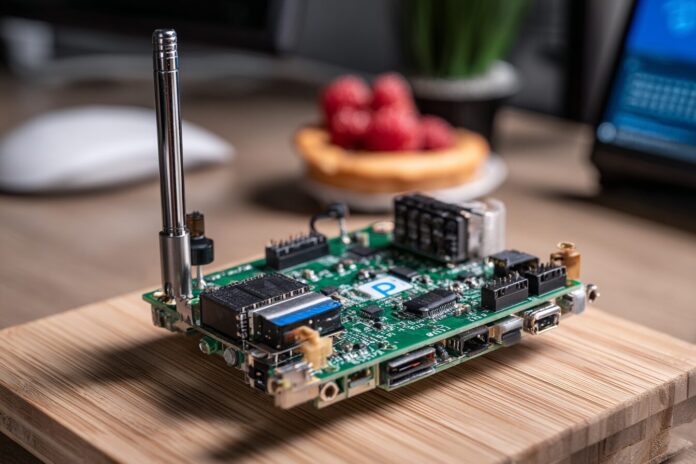A wireless heart rate monitor powered by Raspberry Pi and Wi-Fi signals is no longer a far-fetched idea. Thanks to rapid developments in signal processing and artificial intelligence, a typical Raspberry Pi can now provide contactless, clinically accurate heart rate monitoring. This breakthrough eliminates the need for bulky wristbands or expensive fitness trackers, thereby democratizing health technology in everyday environments.
Moreover, this technology paves the way for a new era in remote health monitoring. The integration of wireless technology with open-source hardware means that both hobbyists and professionals can experiment with innovative solutions to monitor vital signs. Therefore, understanding the underlying methods and benefits is crucial for anyone interested in the future of smart health monitoring.
Transforming Health Tech: The Rise of Wireless Heart Rate Monitoring
Most importantly, the emergence of wireless heart rate monitoring harnesses the omnipresent Wi-Fi networks found in homes and offices. Because this method does not require contact sensors, it provides a hassle-free solution for continuous, remote health monitoring. In addition, the technology taps into existing infrastructure, making it an eco-friendly and cost-effective alternative to traditional monitoring systems.
Besides that, recent studies and experiments have shown that wireless sensing can achieve clinically accurate measurements. Research from University of California Santa Cruz, detailed in the Pulse-Fi paper, confirms that minor changes in Wi-Fi signals can reliably reflect heart activity. This advancement represents a significant leap forward in telehealth and IoT-based health solutions.
How Does It Work? The Science behind Wireless Heart Rate Sensing
Every heartbeat causes slight body movement, which in turn impacts Wi-Fi signals. These movements alter the Wi-Fi Channel State Information (CSI), a collection of metrics that describe data transmission through the air. Consequently, even small changes in phase, frequency, or amplitude can encode vital physiological information.
The process involves three distinct, yet interconnected, steps. First, CSI capture is performed by the Raspberry Pi’s Wi-Fi chipset. With advanced firmware settings, the device records hundreds of subcarriers. This is in stark contrast to simpler microcontrollers like the ESP32, which has fewer data points. Because a richer signal profile is essential, the Raspberry Pi holds a distinct advantage. As noted by sources such as NotebookCheck, the number of subcarriers directly affects measurement accuracy.
Secondly, raw signal data undergoes noise filtering. Most importantly, bandpass filtering is applied to isolate the heart rate frequency range (typically between 0.8–2.17 Hz for adults). Because environmental factors such as keyboard clicks or HVAC noise can interfere, advanced techniques are used to clean up the data. Therefore, the accuracy of the monitoring system is preserved even in a noisy environment.
Lastly, an AI-driven model based on Long Short-Term Memory (LSTM) neural networks interprets the cleaned data. In this phase, the machine learning algorithm distinguishes genuine heartbeats from incidental movements. Research on this method has been supported by collaborative projects and experimental results from Hackaday and others, ensuring the reliability of measurements even during routine activities.
Setting It Up: Pulse-Fi on the Raspberry Pi
The Pulse-Fi system, which utilizes a Raspberry Pi 4B, is remarkably simple to deploy. Because most modern homes and offices are equipped with Wi-Fi networks, no additional infrastructure is required. In contrast to traditional monitors, the subject using Pulse-Fi need not wear any device or maintain a strict posture.
In practice, the system collects five-second CSI snapshots and then computes near real-time heart rate estimates. These results closely match those provided by clinical-grade oximeters. Besides that, the Raspberry Pi supports a denser array of CSI subcarriers (234 in experiments) compared to other microcontrollers like the ESP32, which typically offers only 64. Consequently, the system performs accurately whether the subject is sitting, standing, or lying down.
Practical Implications of Wireless Monitoring
The potential applications of wireless heart rate monitoring are vast and promising. Most importantly, remote and unobtrusive monitoring can significantly enhance healthcare delivery. For example, hospitals can use this technology to continuously monitor patients without attaching cumbersome devices, thereby reducing infection risks. Because it is both cost-effective and scalable, it also stands to benefit eldercare and home health management.
Moreover, since the Raspberry Pi is affordable, versatile, and widely available, researchers and practitioners alike can adapt and expand on this technology. In addition, emerging applications include monitoring other vital signs such as breathing patterns, which may aid in early detection of conditions like sleep apnea. Therefore, the future of telehealth looks both innovative and inclusive.
The Future: Accessible and Cost-Effective Vital Sign Tracking
As development proceeds, these pioneering algorithms are continuously refined. Because open-source codebases are actively expanding, the technology will soon be accessible to nearly every Wi-Fi-enabled home. Most importantly, the non-contact nature of these sensors minimizes hygiene risks. This makes the approach exceptionally suitable for applications in remote patient monitoring and crowded environments.
Additionally, researchers and developers are exploring ways to monitor numerous individuals simultaneously using one device. Such scalability is key in densely populated scenarios like offices and care facilities. Therefore, building a wireless heart rate monitor with a Raspberry Pi and Wi-Fi is promising not just as an experimental project, but as a cornerstone of future ambient health care. The seamless integration of AI, CSI data analysis, and everyday Wi-Fi infrastructure reflects the next step in smart health technology.
References and Further Reading
For readers interested in exploring more details, several excellent resources are available. The NotebookCheck article details the clinical accuracy of Wi-Fi based heart monitoring and provides technical insights.
Similarly, Hackaday offers an in-depth look into the pioneering efforts and technical challenges of heart rate monitoring via Wi-Fi. Meanwhile, the comprehensive Pulse-Fi study from UC Santa Cruz is available here. Additionally, perspectives from Picobricks and FindArticles further broaden the context and practical applications in this evolving field.



